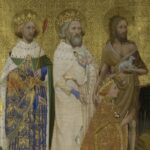PERFORMANCE REVIEW – A MIDSUMMER NIGHT ‘S DREAM
The play at High Park A Midsummer Night’s dream by William Shakespeare was fantastical and magical as it was intended to be, incorporating the world of fairies and the supernatural world. The stage lighting displayed a mosaic of colors on stained glass, shimmering lights on capes worn by the fairies and props that had an illuminating and ethereal effect. The play brings in these supernatural beings through the characters of Oberon, Titania, Puck and their train of fairies leaving the audience with this nagging question of what is real and what is an illusion and the power of magic.
It is clear that A Midsummer Night’s Dream leans more toward the world of dreams and illusion than reality. Even the title has the word dream in it. Theseus’s comments about the lovers’ stories, which are strange and bizarre, considers them madmen’s rantings:
More strange than true. I never may believe
These antiques fables nor these fairy toys,
Lovers and madmen have such seething brain, (5.1.2-4)
A Midsummer Night’s Dream is filled with fantasy, imagination, and intertwined dreams and reality. Love and dreams win over and the lovers become madmen losing their minds and reason. Theseus who is a duke in the Athenian court is ruled by law and reason and scoffs at : “The lunatic, the lover and the poet/ Are of imagination all compact” (5.1.7-8). Love is irrational and lovers act like madmen who cannot think straight. .And when the play ends there is a happy resolution where everyone finds their ideal soulmate with a little help of Puck’s magic. The mischievous Puck who orchestrates the love entanglements speaks to the audience directly about the confusion that he may have caused:
If we shadows have offended,
Think but this, and all is mended –
That you have but slumber’d here
While these visions did appear.
And this weak and idle theme,
No more yielding but a dream. (5.1.415-420)
Shakespeare draws in this other world, the realm of magic, that can intervene in the affairs of men which sometimes may have unintended results. However, situations can be mended by these fairies with their own brand of potions or love juices to change direction and make things right. Shakespeare is also provoking the audience to think about this magical realm, whether it is an illusion or an unseen reality. Demetrius and Lysander are in love with Hermia. Helena dotes on Demetrius and will do anything in her human power to gain his love. “Love looks not with the eyes, but with the mind, / And therefore is wing’d Cupid painted blind.”.(1.1.234-235). Demetrius has a different love interest and is blinded by love, and this is where the fairy king’s servant, Puck, is instrumental in transferring Demetrius’ affection to Helena. . Puck does not get his magic formula correct at the first try, but after a few attempts the love juice works perfectly and Demetrius falls in love in love with Helena. When Demetrius wakes up, he wonders:
Are you sure
That we are awake? It seems to me
That yet we sleep, we dream (4.1.192-194)
A Midsummer Night’s Dream makes use of romantic problems, a supernatural setting, and the mechanicals who perform a play “Pyramus and Thisbe” for the wedding couples to pose essential questions about the relationship between illusion and reality, truth and deceit, dreams and the waking world. Shakespeare takes the audience on a journey into his dream world in the form of his play. He transcends physical boundaries and taps into his imagination to create this fairy world where there is magic and life can be a dream. The audience drifts away from reality for a while and comes to the conclusion of the necessity of dreaming to bring about the power of creativity, love, and magic in one own’s life.
WORKS CITED:
Shakespeare, William. A Midsummer Night’s Dream, Penguin Random House. 2000.

